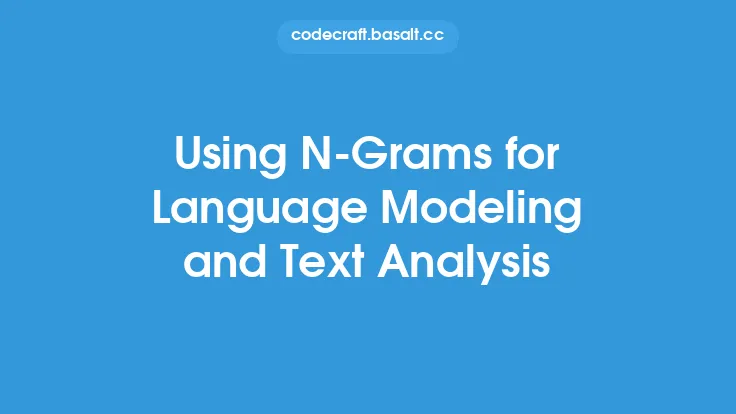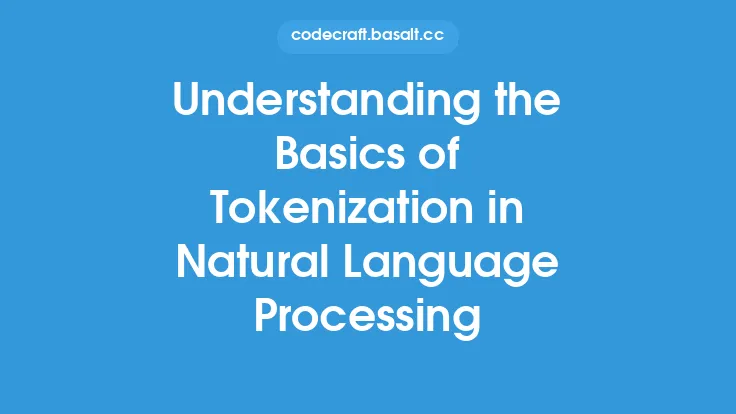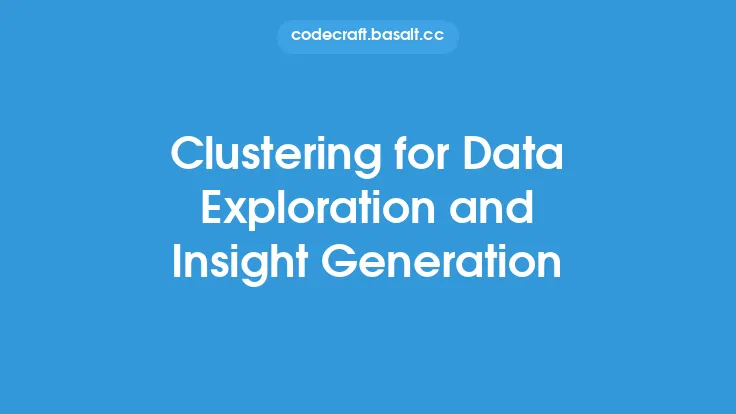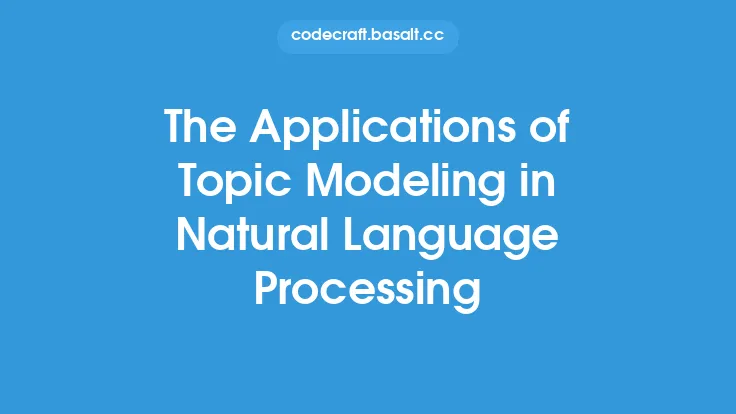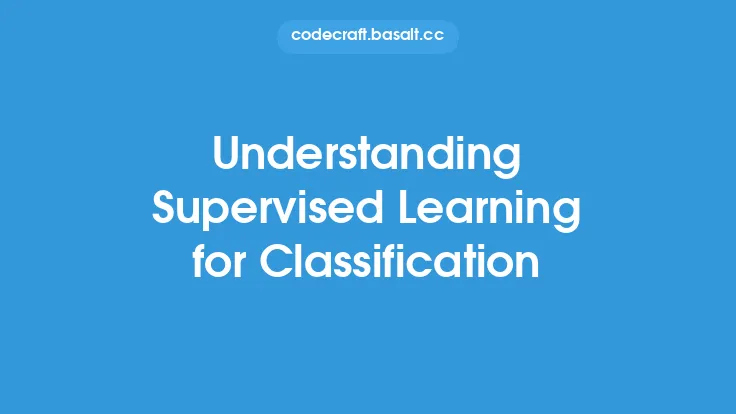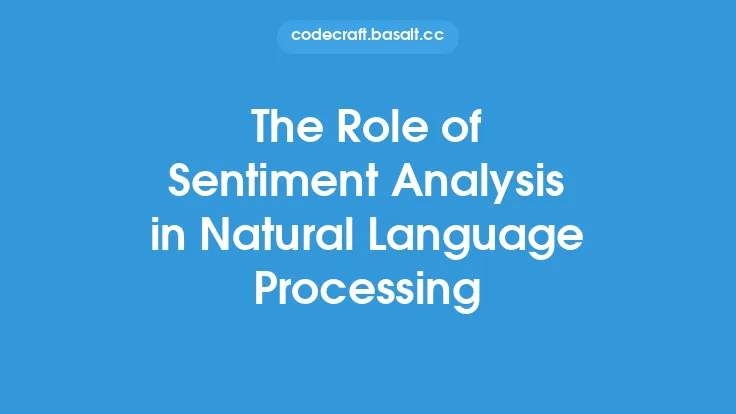Natural Language Processing (NLP) is a subfield of Artificial Intelligence (AI) that deals with the interaction between computers and humans in natural language. It is a multidisciplinary field that combines computer science, linguistics, and cognitive psychology to enable computers to process, understand, and generate natural language data. One of the key applications of NLP is text classification and clustering, which involves categorizing text into predefined categories or grouping similar texts together. In this article, we will delve into the world of text classification and clustering, exploring the techniques, algorithms, and applications used in NLP.
Introduction to Text Classification
Text classification is a fundamental task in NLP that involves assigning a label or category to a piece of text based on its content. The goal of text classification is to automatically assign a text to a predefined category, such as spam or non-spam emails, positive or negative product reviews, or news articles into different categories like sports, politics, or entertainment. Text classification has numerous applications, including sentiment analysis, spam detection, and information retrieval. The process of text classification involves several steps, including text preprocessing, feature extraction, and classification using a machine learning algorithm.
Techniques for Text Classification
There are several techniques used for text classification, including rule-based approaches, machine learning approaches, and deep learning approaches. Rule-based approaches use hand-coded rules to classify text, while machine learning approaches use algorithms to learn patterns in the data and make predictions. Deep learning approaches use neural networks to learn complex patterns in the data and have achieved state-of-the-art results in many text classification tasks. Some popular machine learning algorithms used for text classification include Naive Bayes, Support Vector Machines (SVM), and Random Forest. Deep learning algorithms like Convolutional Neural Networks (CNN) and Recurrent Neural Networks (RNN) have also been widely used for text classification tasks.
Introduction to Text Clustering
Text clustering is another important task in NLP that involves grouping similar texts together based on their content. Unlike text classification, text clustering does not require predefined categories, and the goal is to discover patterns and relationships in the data. Text clustering has numerous applications, including document organization, information retrieval, and topic modeling. The process of text clustering involves several steps, including text preprocessing, feature extraction, and clustering using a clustering algorithm.
Techniques for Text Clustering
There are several techniques used for text clustering, including hierarchical clustering, k-means clustering, and density-based clustering. Hierarchical clustering builds a hierarchy of clusters by merging or splitting existing clusters, while k-means clustering partitions the data into k clusters based on the mean distance of the features. Density-based clustering groups data points into clusters based on their density and proximity to each other. Some popular clustering algorithms used for text clustering include k-means, hierarchical clustering, and DBSCAN (Density-Based Spatial Clustering of Applications with Noise).
Feature Extraction for Text Classification and Clustering
Feature extraction is a critical step in both text classification and clustering, as it involves converting the text data into a numerical representation that can be processed by machine learning algorithms. There are several feature extraction techniques used in NLP, including bag-of-words, term frequency-inverse document frequency (TF-IDF), and word embeddings. Bag-of-words represents text as a bag, or a set, of its word occurrences, while TF-IDF takes into account the importance of each word in the entire corpus. Word embeddings, such as Word2Vec and GloVe, represent words as vectors in a high-dimensional space, capturing their semantic meaning and context.
Evaluation Metrics for Text Classification and Clustering
Evaluating the performance of text classification and clustering models is crucial to ensure their accuracy and effectiveness. There are several evaluation metrics used in NLP, including accuracy, precision, recall, F1-score, and clustering metrics like silhouette score and calinski-harabasz index. Accuracy measures the proportion of correctly classified instances, while precision, recall, and F1-score measure the performance of the model on positive and negative classes. Clustering metrics like silhouette score and calinski-harabasz index evaluate the quality and consistency of the clusters.
Applications of Text Classification and Clustering
Text classification and clustering have numerous applications in various domains, including marketing, healthcare, finance, and social media. Some examples of applications include spam detection, sentiment analysis, topic modeling, and document organization. Text classification can be used to classify customer reviews as positive or negative, while text clustering can be used to group similar documents together based on their content. Text classification and clustering can also be used to analyze large volumes of text data, such as social media posts, to extract insights and patterns.
Challenges and Future Directions
Despite the significant progress made in text classification and clustering, there are still several challenges and future directions to be explored. One of the major challenges is dealing with the complexity and nuance of human language, which can be ambiguous, context-dependent, and culturally sensitive. Another challenge is handling the large volumes of text data, which can be noisy, incomplete, and imbalanced. Future directions include exploring new machine learning algorithms and techniques, such as transfer learning and attention mechanisms, and applying text classification and clustering to new domains and applications, such as multimodal processing and explainable AI.
Conclusion
Text classification and clustering are fundamental tasks in NLP that have numerous applications in various domains. The techniques and algorithms used for text classification and clustering, including machine learning and deep learning approaches, have achieved state-of-the-art results in many tasks. However, there are still several challenges and future directions to be explored, including dealing with the complexity and nuance of human language and handling large volumes of text data. As NLP continues to evolve and improve, we can expect to see new and innovative applications of text classification and clustering in the future.
